Defend Against Headlocks
DEFENSE AGAINST HEADLOCKS
The headlock is a very poor technique for anything more than immobilizing an enemy. It is, however, a very common technique in actual fighting; therefore, knowing how to escape is very important for a soldier. The techniques are progressive, and should be attempted in the order taught.
Form the Frame.
(1) Step 1. The fighter’s first step in escaping from a headlock is to ensure that his arm is not captured. With a short jerky motion, the fighter pulls his elbow in and turns on his side.
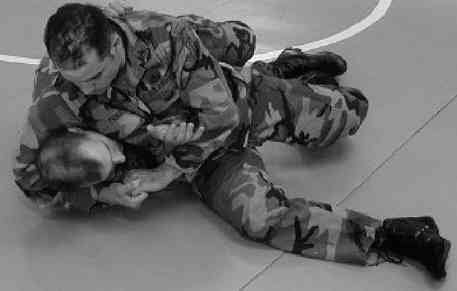
Form the Frame, step 1
(2) Step 2. If able, the fighter forms a frame under the enemy’s chin. The fighter’s top arm should be under the enemy’s jawbone, and his top hand should rest comfortably in the grasp of the other hand. At this point, the fighter’s bone structure should be supporting the enemy’s weight.
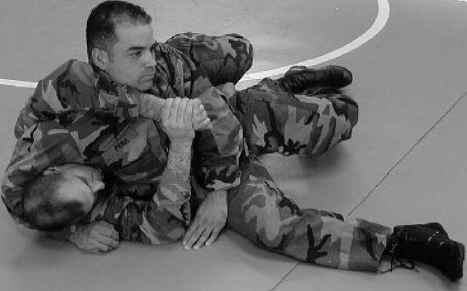
Form the frame, step 2.
(3) Step 3. By pushing with the top leg, the fighter moves his hips back away from the enemy.
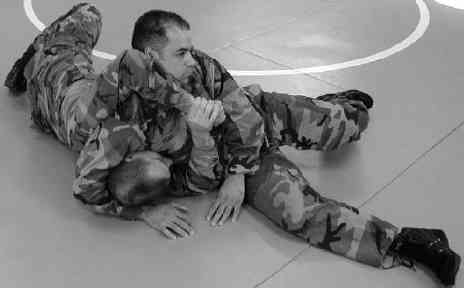
Form the frame, step 3.
(4) Step 4. The fighter reaches with both legs to grasp the enemy’s head. If the enemy lets go of his headlock, the fighter squeezes the enemy’s neck with his legs.
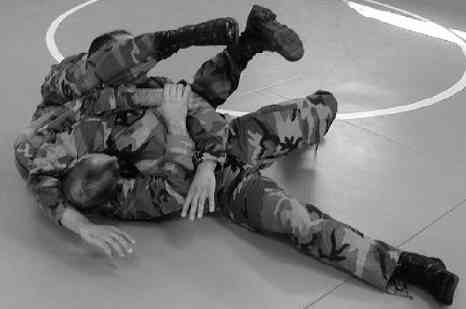
Form the frame, step 4.
(5) Step 5. If the enemy does not release the headlock, the fighter rotates around until he is on both of his knees behind the enemy’s back.
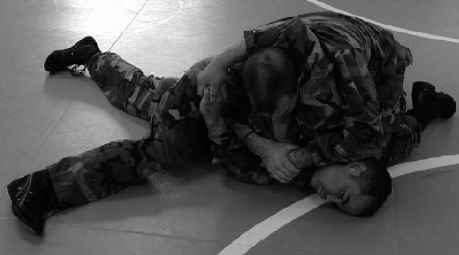
Form the frame, step 5.
(6) Step 6. The fighter uses his top hand to clear the enemy’s legs out of the way and steps over, bringing his foot in tight against the enemy’s hip. The fighter establishes his base by putting both hands on the ground.
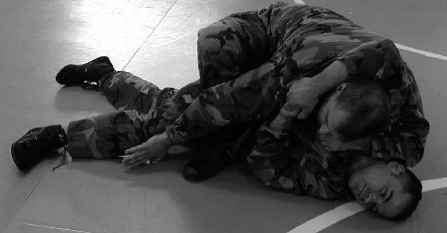
Form the frame, step 6.
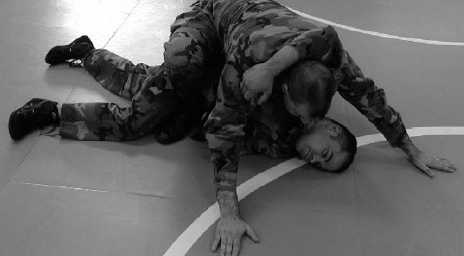
Form the frame, step 6 (continued).
(7) Step 7. The fighter forces the enemy to release his grip on the fighter’s neck by forming the frame and leaning toward the enemy’s head, driving the bone of his upper arm under the enemy’s jawbone.
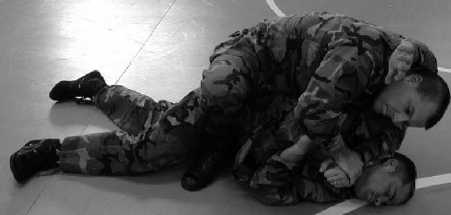
Form the frame, step 7.
Follow the Leg. Although the fighter should always try to form the frame, sometimes the enemy will tuck his head in making it impossible.
(1) Step 1. After ensuring that his arm is not captured as in the first technique, the fighter moves as close to the enemy as possible and places his leg over him. The fighter’s heel should find the crease at the enemy’s hip formed by his leg.
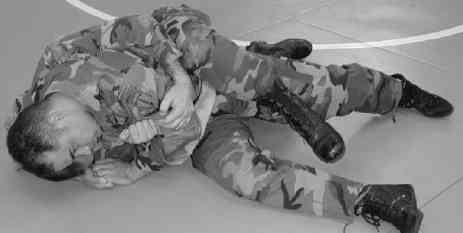
Follow the leg, step 1.
(2) Step 2. The fighter pulls his bottom arm free and places his weight on it. Holding the enemy tightly at the other shoulder, the fighter crawls over him using his own leg as a guide.
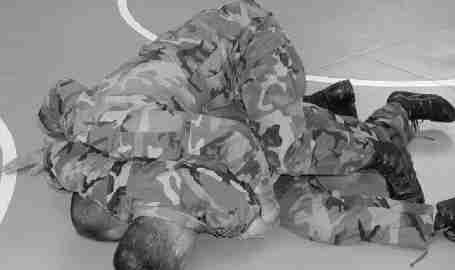
Follow the leg, step 2.
(3) Step 3. At this point the enemy has the option to either roll with the fighter or not. If he does not, the fighter uses all of his body to apply pressure to the enemy’s shoulder. This will break the enemy’s grip and leave the fighter behind the enemy. If the enemy rolls with the fighter, the fighter brings his foot into the enemy’s hip as before and break his grip by forming the frame and applying pressure toward his head.
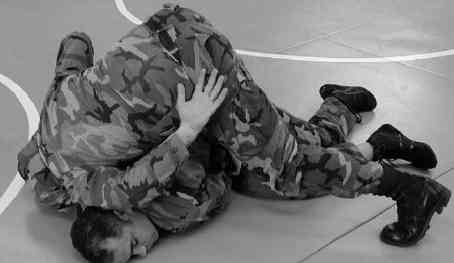
Follow the leg, step 3.
Roll Toward the Head. If the enemy should succeed in capturing the fighter’s arm, the fighter can use the enemy’s reaction to his attempts to free it to his advantage. With short jerky motions, the fighter attempts to pull his arm free. The enemy will have to adjust his position by leaning toward the fighter. Immediately after the fighter attempts to pull his arm free and feels the enemy pushing, the fighter arches toward his head and then over his opposite shoulder, taking the enemy over.
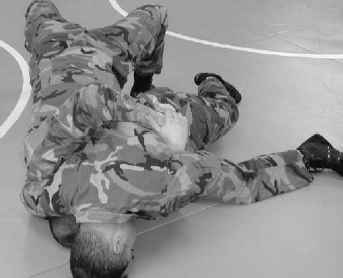
Roll toward the head.
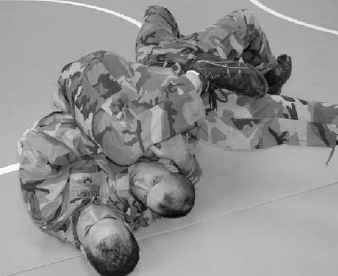
Roll toward the head (continued).
Note: The roll must be timed correctly and must be toward the fighter’s head and not straight over his body.